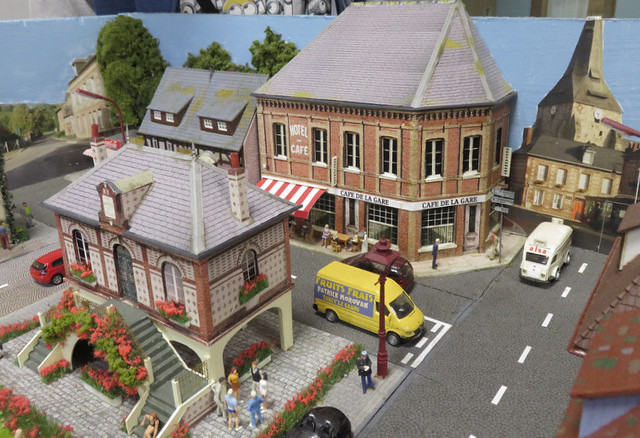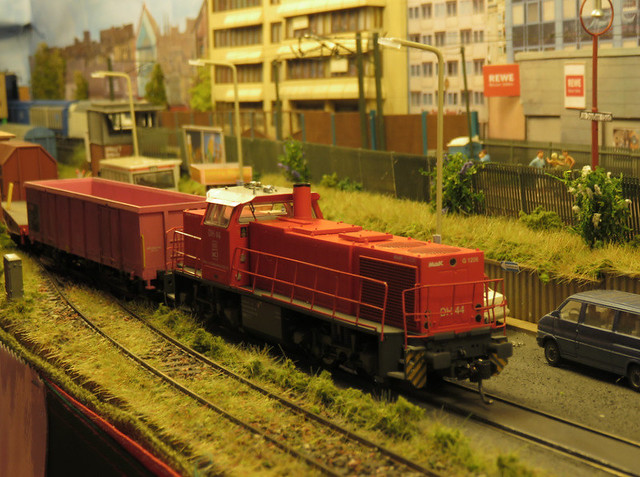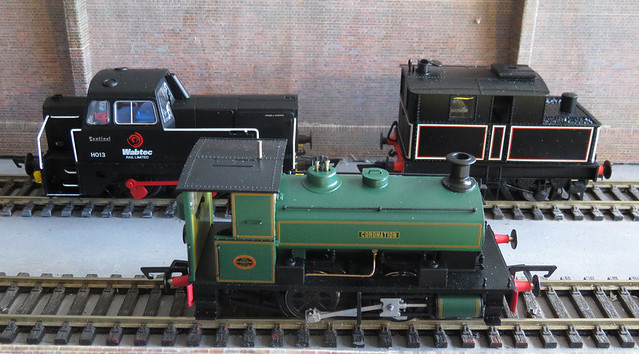I'm a little behind with updates on Joshua's EXPO-NG entry, so here's a quick rundown on the buildings. He wanted a factory scene so I raided my cupboard of bits and found left-overs from the Metcalf card kits I used on Awngate, which produced these two buildings seen here unfinished. The bare card edges were touched up with paint, and interiors painted black.

The kits also include sheets of matching brick-paper, and spare windows and doors, so with a little work we came up with a couple of larger buildings to match, which were built to fit the available space. The one on the left has a flat roof made with emery paper.

You can also see the back-scene has been painted with a sky colour, simple but quite effective.

For the final building Joshua wanted a corrugated iron shed, which we made up from plasticard (black, to save painting inside). This was clad in Wills clear corrugated material, which not only allowed for the window panel (by masking during painting), but is nice and thin at the edges unlike the solid corrugated material. The brick plinth uses Slaters sheet.

The building was primed with red primer, painted with some rust colours, and then wetted and sprinkled with salt. Once dry black paint was sprayed over the salt. The salt was later washed/rubbed off to give a peeling blistering paint effect. A dirty wash and some weathering powders completed the finish, although it is seen here awaiting its doors.










































